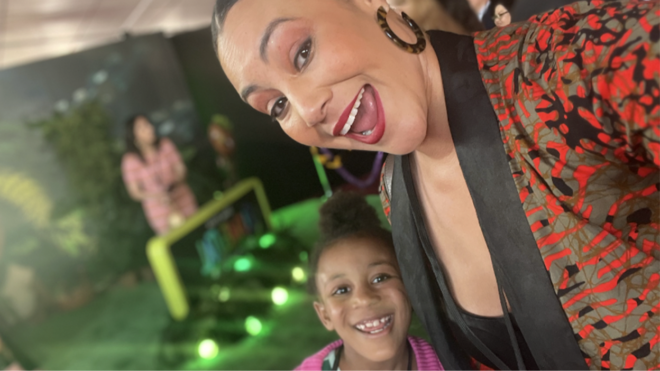Sooner or later it's bound to happen to all teenagers: They wake up, peer in the mirror… and are horrified to find a huge, honking zit prominently displayed for the world to see. Unfortunately, teens and acne go together like peanut butter and jelly — their bodies are simply primed to pump out pimples galore. "Teen acne usually shows up in teenagers between the ages of 10 and 20 and occurs because of hormonal changes that place during puberty," says David Bank, a dermatologist in Mt. Kisco, New York, and author of Beautiful Skin: Every Woman's Guide to Looking Her Best at Any Age.
__In a nutshell, skyrocketing hormone levels cause the sebaceous glands in the skin to produce more oil, which mixes with bacteria and dead skin cells and clogs the pore, resulting in whiteheads, blackheads, and other unattractive new features on your teen's face. This usually results in a very, very unhappy teen who doesn't want to be seen in public.
The good news is, acne can be treated — whether it's mild, moderate, or severe. Here's how.
Mild Acne
Got a smattering of whiteheads and blackheads and the occasional pimple? Then your problem can likely be easily solved with over-the-counter topical products, says Fayne Frey, MD, a dermatologist in West Nyack, NY and founder of the skin care product review site Fryface.com. An ointment with 1-2 percent salicylic acid is great at sloughing off dead layers of skin and eliminating whiteheads and blackheads; for pimples — which means bacteria is trapped and inflamed under the skin — a 5-10 percent benzoyl peroxide is better due to its antibiotic properties.
These topical products come in two forms: a "leave on" ointment, or "wash off" cleanser. Since benzoyl peroxide rubbed off on towels, clothes, and pillow cases can cause their color to fade, Dr. Frey prefers the wash off cleanser. Although these products work, they can also cause skin irritation, redness, or flaking. And don't expect overnight results: Benefits may not be seen for four to eight weeks, and your teen will need to keep up the regimen as long as they want to keep acne at bay.
Or how about a trip to the spa for a steam, facial, peel, or more high-fangled treatments like lasers? According to Dr. Frey, they're a waste of time and money. "There is some evidence that lasers work by killing bacteria, but the effects aren't permanent," she warns. "So at $250 to $500 a pop you can end up spending a lot of money. And while they probably don't hurt, there's no scientific proof that steaming or facials have any effect."
Even Proactiv — that alleged miracle zit zapper touted by Jessica Simpson — is overpriced, says Dr. Frey. While the "teen kit" costs almost $40, "It only has 2.5 percent benzol peroxide, the active ingredient," she points out. Meanwhile, Clearisil cream has 10 percent benzoyl peroxide, and costs just $5.49.
And since prevention is truly the best (and cheapest) medicine, help your teen avoid acne before it erupts. Make sure they wash their face twice a day, remove makeup before bed, and avoid skin care products with ingredients that can cause acne, like lanolin (commonly in moisturizers), isopropyl myristate (aftershave), and red dyes in cosmetics (blush).
Moderate Acne
Teens with moderate acne typically have more whiteheads, blackheads, and pimples than they can easily count that don't respond to over-the-counter treatments. At this point, take your teen to their pediatrician, doctor, or (ideally) dermatologist to explore stronger, prescription-strength options, which typically take the form of a topical vitamin A derivative like tretinoin (Retin-A) or adapalene (Differin). Vitamin A causes skin cells to proliferate and rise to the surface, clearing pores. "Topical antibiotic creams are also often used as well to reduce skin bacteria," adds Dr. Frey.
Severe Acne
Teens who are really suffering from acne may not only have whiteheads, blackheads, and pimples, but cysts growing deeper in the skin, as well as acne on their back, chest, or other body parts. For this, "dermatologists may prescribe oral antibiotics to reduce skin bacteria and inflammation," says Dr. Frey. Or if all of the above treatments are ineffective (Vitamin A, benzoyl peroxide), derms may break out the big guns: oral isotretinoin.
You may know isotretinoin as Accutane, and while this product was discontinued in 2009, other generic brands are available (like Amnesteen, Claravis and Sotret). Studies show isotretinoin reduces the size of the sebaceous glands by 90 percent>; no more oil, no more zits. "Taken orally for 16-20 weeks, this drug can cure acne in 85 percent of patients, permanently," says Dr. Frey. Yet the drug can come with serious side effects, including problems with the liver and stomach, depression and suicidal tendencies, and a high risk of birth defects if you become pregnant while on the drug. As a result, Frey considers it a last resort.
Even if your child's acne isn't extreme, if your teen is freaking out, take it seriously. "Sometimes even the mildest acne can cause horrible self-esteem," Dr. Frey points out. "One high schooler I treated stopped going to school and nearly flunked a grade because of acne. But once I treated it and his acne cleared, he had a great senior year. Getting the right treatment can change a kid's life."







